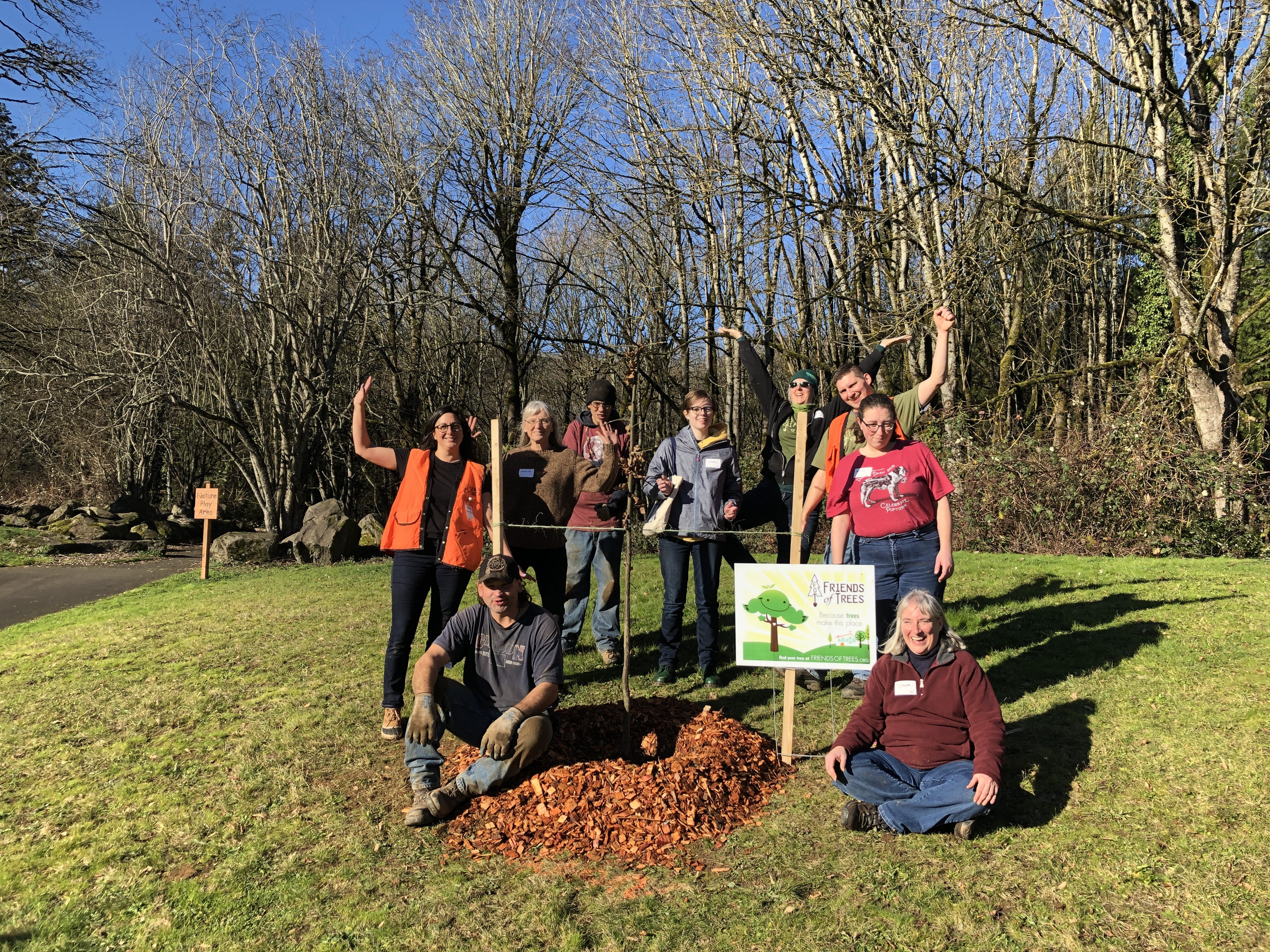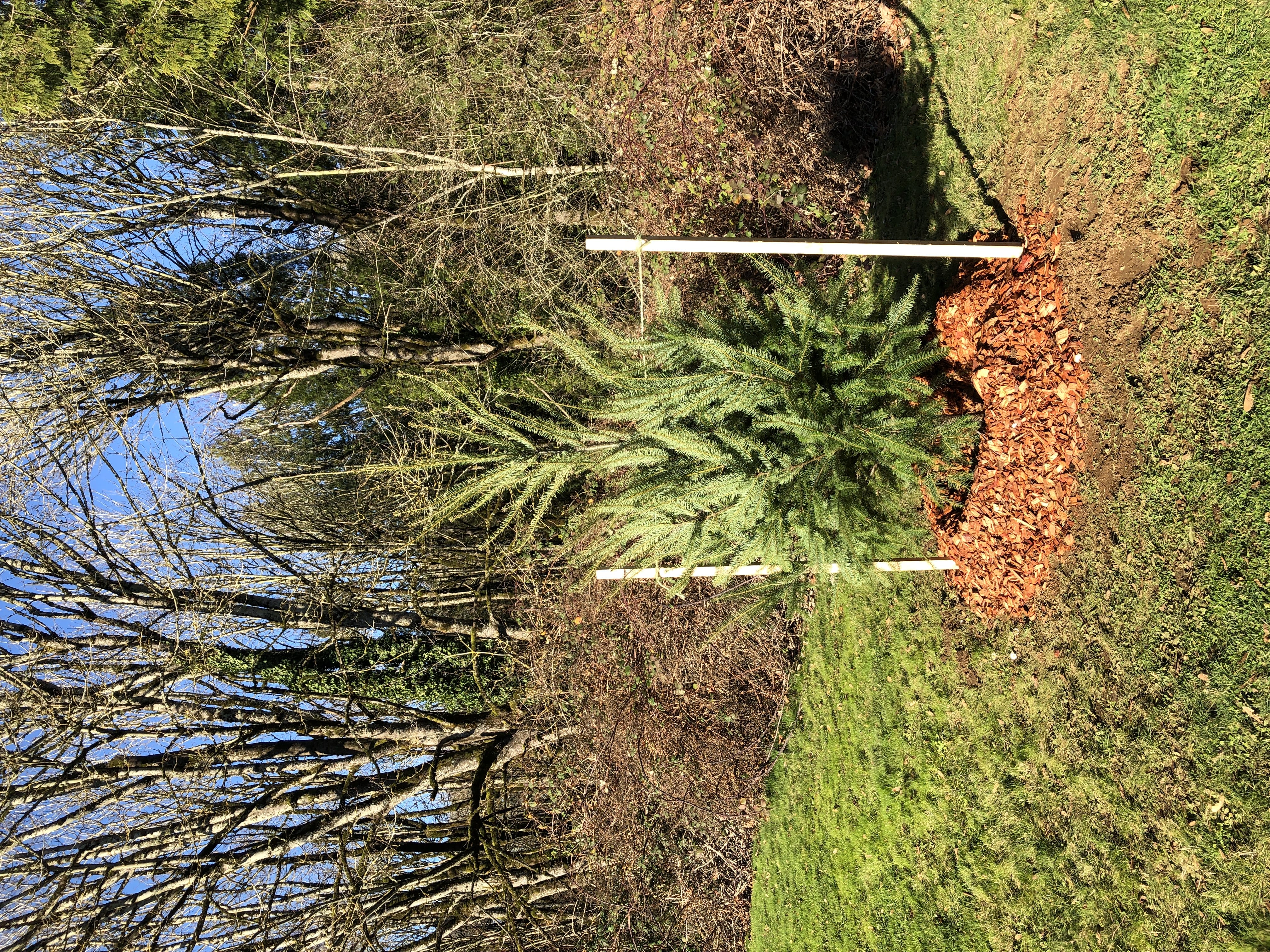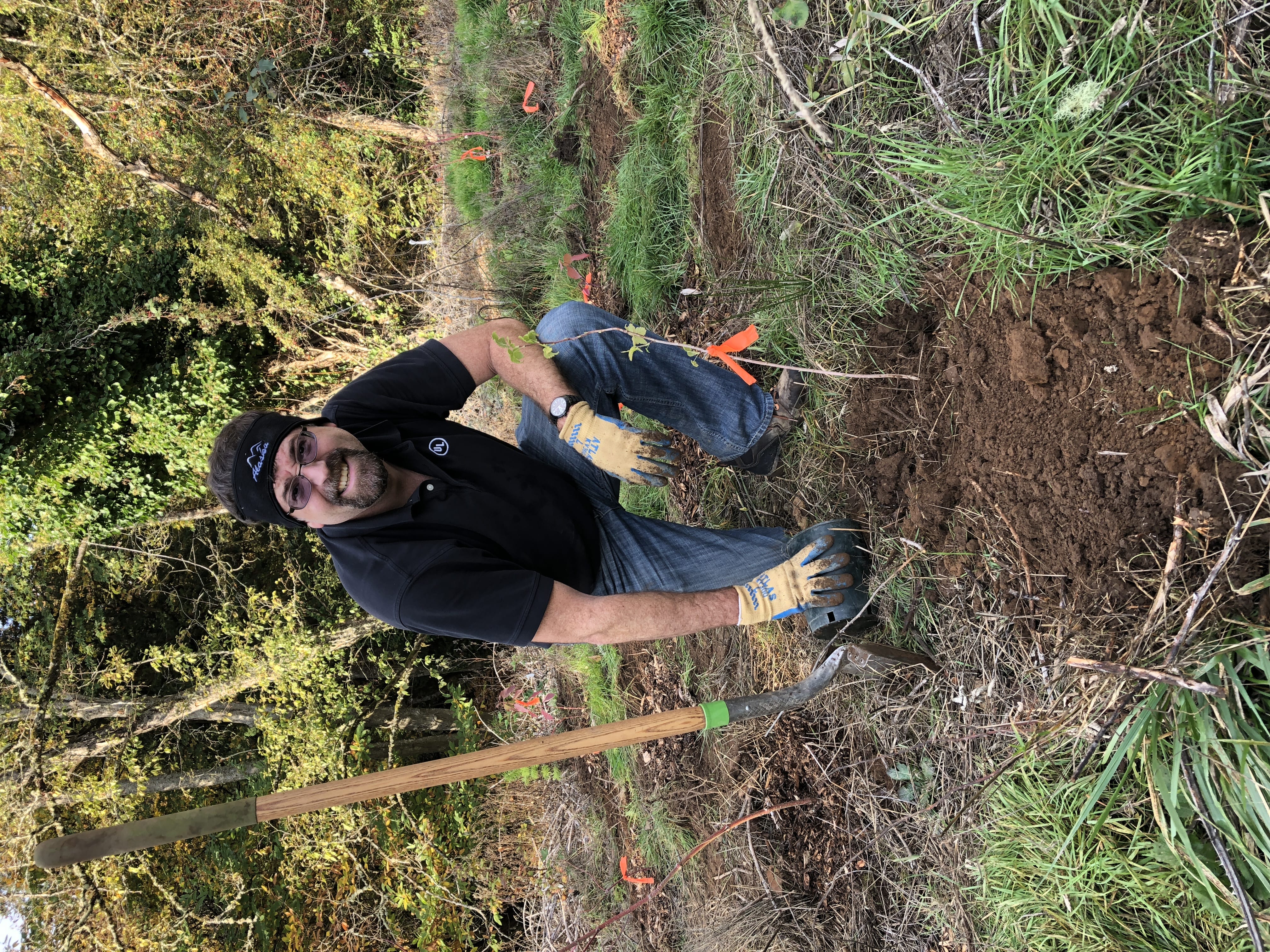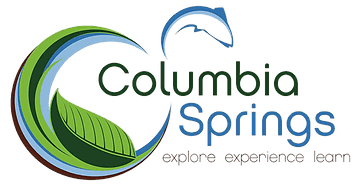
Trees are a vital component of the land at Columbia Springs, filtering air and water, providing shade and erosion control and much more. We are lucky to have this 100-acre natural area; but, there was one spot on our site missing trees: our parking lot.
Most parking lots are paved over with concrete, which makes for hot, dry and sunny conditions. Although the Columbia Springs parking lot has a bioswale and permeable parking spots, we lack large trees to provide shade, beauty and benefits like decreased crime rates and slower traffic.
Columbia Springs teamed up with City of Vancouver Urban Forestry and Friends of Trees to plant eight new trees in our public parking lot. Urban Forestry worked to develop a planting plan and source the trees, while Friends of Trees provided volunteer support and equipment to get the trees in the ground.

Read on to learn about the trees we planted!
Incense Cedar (Calocedrus decurrens) – A look alike to the Western Red Cedar, the Incense Cedar is more drought tolerant and grows well in full sun, making it the perfect tree for a dry and hot parking lot! Its’ small cones look like a duck’s bill before they open.
Oregon White Oak (Quercus garryana) – A hallmark of the Willamette Valley, the twisted branches of the Oregon White Oak can grow up to 60 feet wide!
Red Alder (Alnus rubra) – An abundant and fast growing tree at Columbia Springs, the Red Alder fixes nitrogen to make essential macro-nutrients available for other plant life. This fast growing tree can reach up to 80’ tall. It has long, chartreuse flowers in the spring and prolific, brown cones in the summer and fall.

Douglas Fir (Pseudotsuga menziesii) – Oregon’s state tree is an excellent pioneer species (meaning it grows well in previously disturbed ares) because it loves full sun and grows quickly.
Bigleaf Maple (Acer macrophyllum) – A common tree at Columbia Springs, the Big Leaf Maple provides habitat for a variety of mosses, lichens and licorice ferns. It has the biggest leaves of all the maples!
Giant Sequoia (Sequoiadendron giganetum) – The Giant Sequoia, one of the largest and longest-lived trees, requires a large amount of space to grow. It enjoys full sun and drier soils. Its bark has the ability to hold water making it noticeably squishy at times!
Pacific Dogwood (Cornus nuttallii) – A beautiful tree, the pacific dogwood develops showy, white flowers in the spring. This tree adds a pop of color in an otherwise dark, coniferous forest.
Cascara (Rhamnus purshiana) – Birds relish the black berries in the fall and winter, but be warned, the berries are poisonous to humans. This low canopy tree can often be found growing along stream banks.
For more Tree ID information go to the Urban Forest Ecosystem Institute or Hansen’s Northwest Native Plant Database.
#cityofvancouer #friendsoftrees #treeplanting #urbanpark #urbangreenspace
